Researchers have named at least six different diving methods of Pied-billed Grebes but I find this one to be the most entertaining to watch. When they want to employ this diving method they change their buoyancy by expelling air from their air sacs and also by flattening their feathers against their bodies which squeezes air from between their feathers. This reduces their specific gravity and they sink like a rock.
I see the behavior fairly often and have finally learned to recognize some signals that they’re about to do it which has allowed me to photograph this diving technique several times – the latest was at Farmington Bay two days ago.
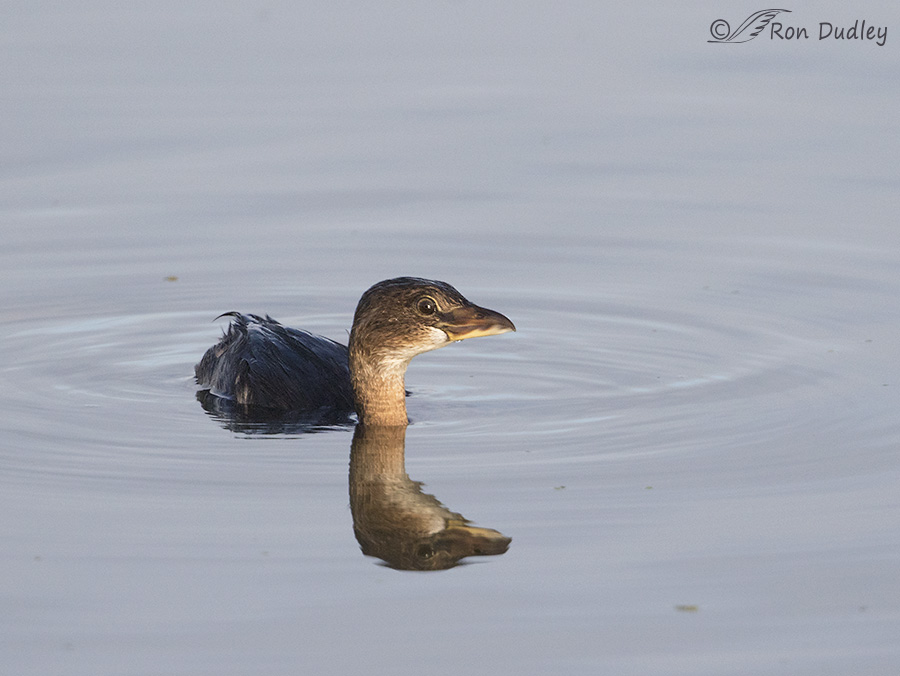
1/2000, f/6.3, ISO 800, Canon 7D Mark II, Canon EF 500mm f/4L IS II USM + 1.4 tc, not baited, set up or called in
The grebe stopped in the water and watched my pickup intensely with the front of its body low in the water.
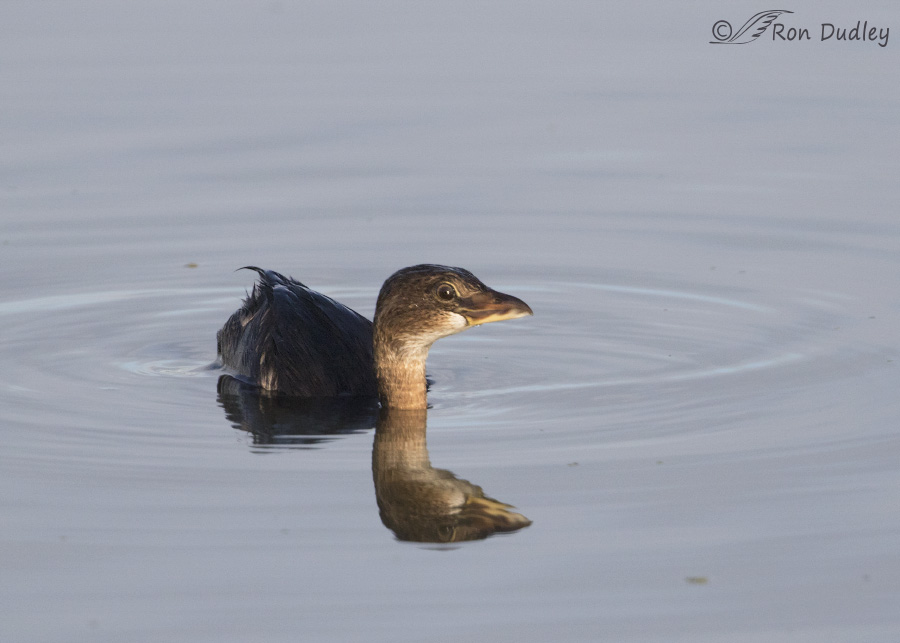
1/2000, f/6.3, ISO 800, Canon 7D Mark II, Canon EF 500mm f/4L IS II USM + 1.4 tc, not baited, set up or called in
When it raised its rear end up slightly I knew it was probably about to dive so I fired off a quick burst beginning with this shot (compare the elevation of the tail in these first two images to recognize one of the signals). These last 4 photos are sequential images in the burst that lasted .4 of a second. The side light isn’t ideal in the photos but you’ll get the idea.
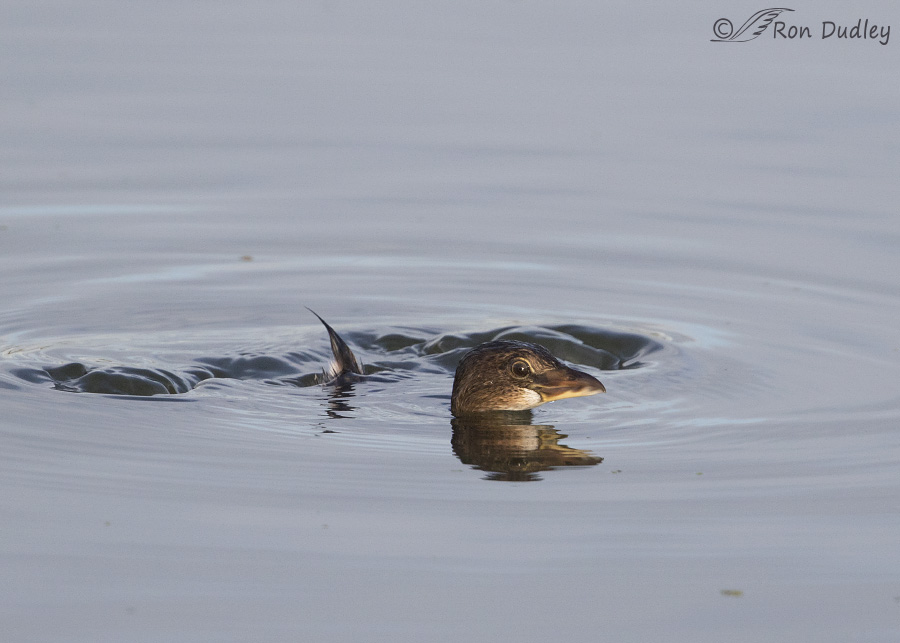
1/2000, f/6.3, ISO 800, Canon 7D Mark II, Canon EF 500mm f/4L IS II USM + 1.4 tc, not baited, set up or called in
At this point only the head and tail are visible as the bird sinks in place.
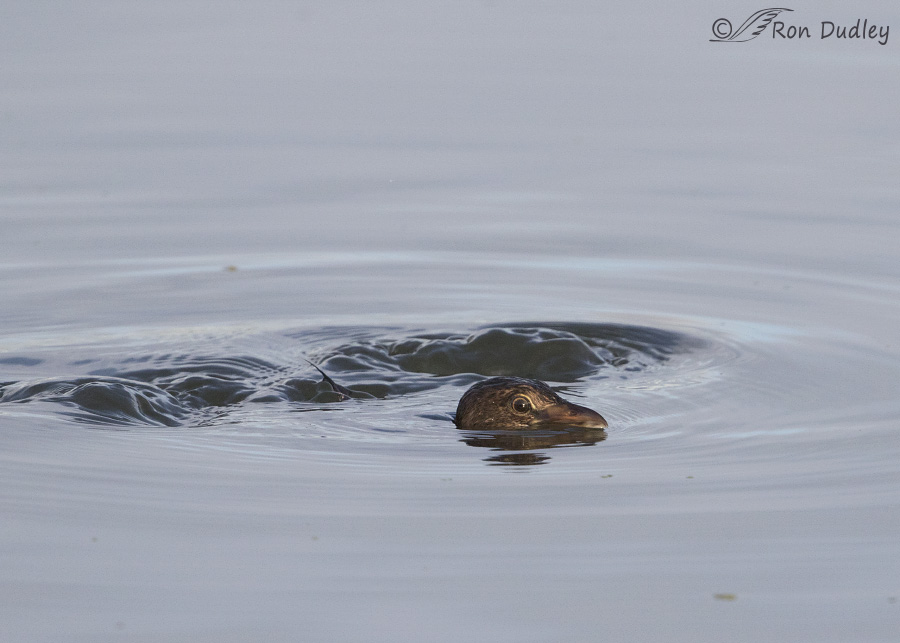
1/2000, f/6.3, ISO 800, Canon 7D Mark II, Canon EF 500mm f/4L IS II USM + 1.4 tc, not baited, set up or called in
Then only the top of the head and the very tip of the tail…
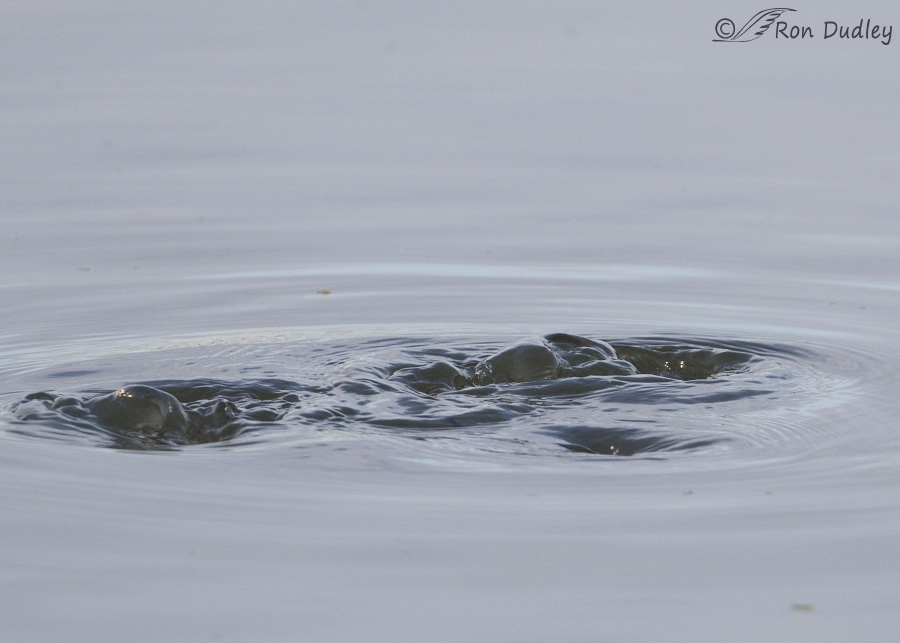
1/2000, f/6.3, ISO 800, Canon 7D Mark II, Canon EF 500mm f/4L IS II USM + 1.4 tc, not baited, set up or called in
and then the bird disappeared below the surface with only the well in the water indicating where the sinking head had been.
This was a quick dive but they can do it very gradually too (in fact this type of dive is called “gradual sinking”). They can hold any position in the water for an extended amount of time. I’ve seen them with only enough of the head sticking out of the water to reveal the eye and top of the bill and hold that position in the water for several seconds. When they sink fast, as in this case, they often use their incredibly flexible legs and feet to help push them down – thus the boiling water left behind on the surface.
I’ve posted about this behavior once before but since I was able to photograph it again I thought it deserved another go-round. After all, repetition is an integral component of learning…
Ron


Never before have I heard how they do this. Thanks for enlightening me and think the series is quite entertaining.
I had never recognized this behavior before reading your last post on the topic, but have seen several versions of it since.
Thanks,
Ken
Always thought they went in head first and tail last..:)
Much more often than not, they do, Liza. This method is only used occasionally.
So much of this charmer was already so low in the water in the first shot… I am tickled (small things for small minds) at the image of a stealth fighter, eases through the water in almost total concealment and love this series, right down to the boiling water. That boiling water suggests despite you describing it as a relatively low energy dive there is still a lot of energy expended at certain points in the process.
EC, I agree – in this particular dive there obviously was significant energy spent in submerging but often that’s not the case. When these birds don’t feel the need to submerge quickly they just sink slowly (thus the name “gradual sinking) when they lower their specific gravity by emptying their air sacs and flattening their feathers and in those instances they don’t use their feet to force them down. Those types of submersions would require little energy.
I am a gradual sinker myself. The exertion comes from attempting to rise up again…
This is a wonderful sequence. In the first photo, the way the body is positioned, it looks to me like the head and body don’t belong to the same creature. What I see is a bird head in front of a pile of something that is covered with feathers… I have never seen anything like this behavior and can’t imagine how they would use this type of dive, other than just trying to disappear.
I definitely see what you mean about that first photo, Susan.
I suspect that a major advantage of this type of dive is that it takes so little energy compared to the other types.
Thank you Ron, Another great lesson in the world of birds.
You are one of the first post I check in the morning ! ! !
“You are one of the first post I check in the morning”
Glad to hear that, David. Thank you for letting me be part of your morning.
Birds are simply magical…seriously. Their adaptations are often into the Holy Cow range! I love that about them!
I couldn’t agree more, Laura. Thanks.
Apparently this bird has the amazing ability to control the buoyancy of specific parts of its body according to its wishes! How cool is that!…I’ve never seen anything like it…a wonderful (literally) series…love the idea of “periscopablility”…of sinking all but the top of its head and eyes…like a frog, an alligator or a crocodile….aint natchur grand!!! And to think this can be done in seconds…… Do you know why they are called”pied”-billed?
“Do you know why they are called”pied”-billed?”
Patty, they’re called “pied-billed” because during the breeding season especially their bill is an ivory white with a transverse black band (“pied” meaning having two or more colors).
You can see what it looks like here – https://www.featheredphotography.com/blog/2013/07/10/pied-billed-grebe-on-nest/
We have a waterfowl species in Louisiana that i know as the “pull-do” or something like that. It dives by pulling its head to its tail in a folding manner like this. But it’s pretty fast. I’ll research to see if I can find out the real name.
Ah.It is a type of grebe. It’s the Least Grebe.
I’d like to photograph the behavior you describe, Arwen – sounds pretty interesting.
Head to the bayous, professor. And take bug juice. Darn skeeters will drain you dry.
And take bug juice. Darn skeeters will drain you dry.
Great sequence! I wonder if the idea of submarines came from watching a Pied-billed Grebe?
Ha, every time I see them go down like this the words “down periscope” go through my mind, Nancy.
VERY interesting! I’m not familiar with the Pied-billed Grebe – fascinating abilities they have.
I’m not familiar with the Pied-billed Grebe – fascinating abilities they have.  Great catch of the process.
Great catch of the process.
Thanks, Judy.
OMG,Ron!! This is such an interesting behavior. It’s also great that you have seen it often enough to know what was coming so you could capture this clever technique of this wonderful bird. Your dialogue also reminds me of your photos of grebes swimming several days ago when the bird’s body looked like a balloon!! I’m so enjoying the world of birds thru your photos and experienecd observations of them.
Jo Ann, that “balloon bird” you mention from that previous post gives us an idea of how much air can be trapped in fluffed up feathers and how getting rid of that air can make them so much heavier in the water. Interesting behavior indeed. Thank you.